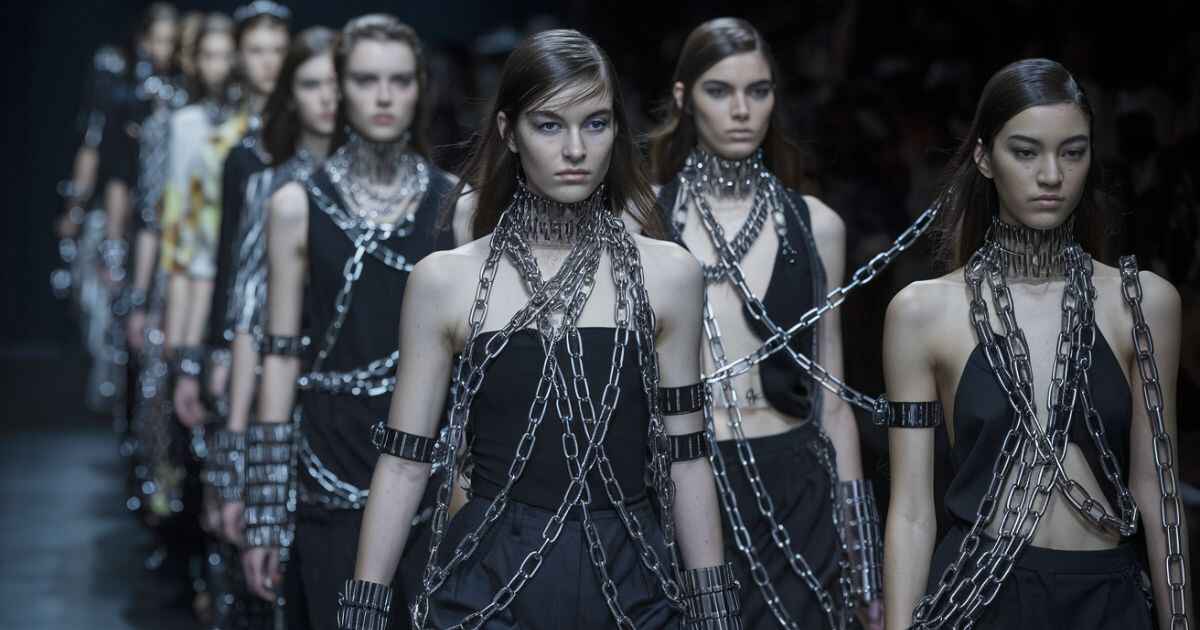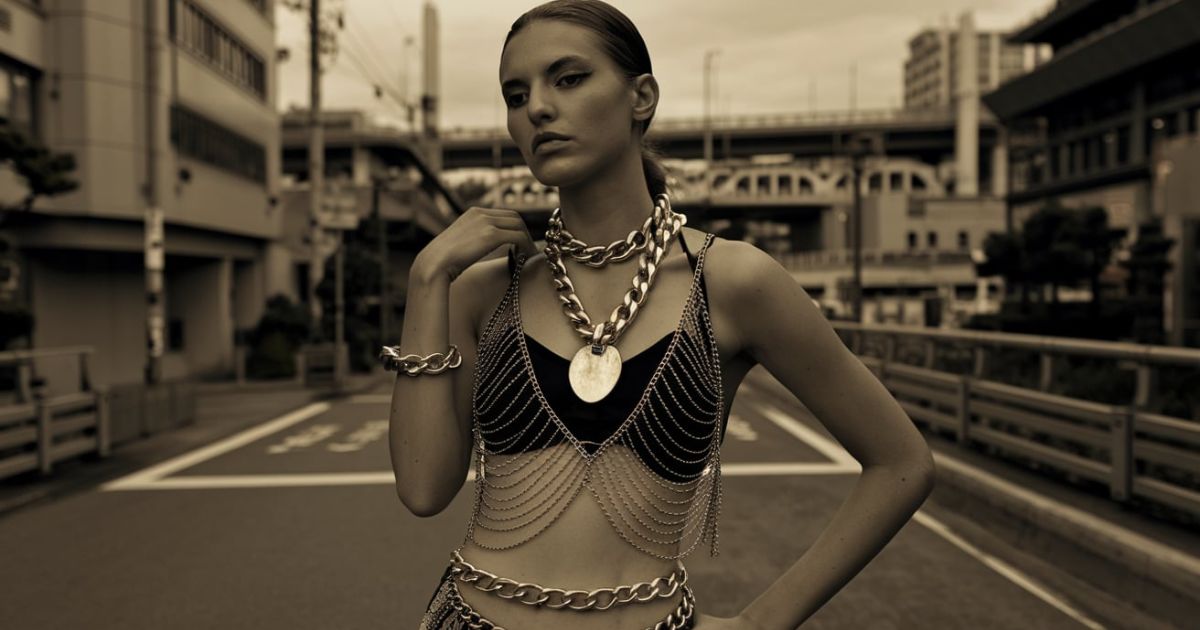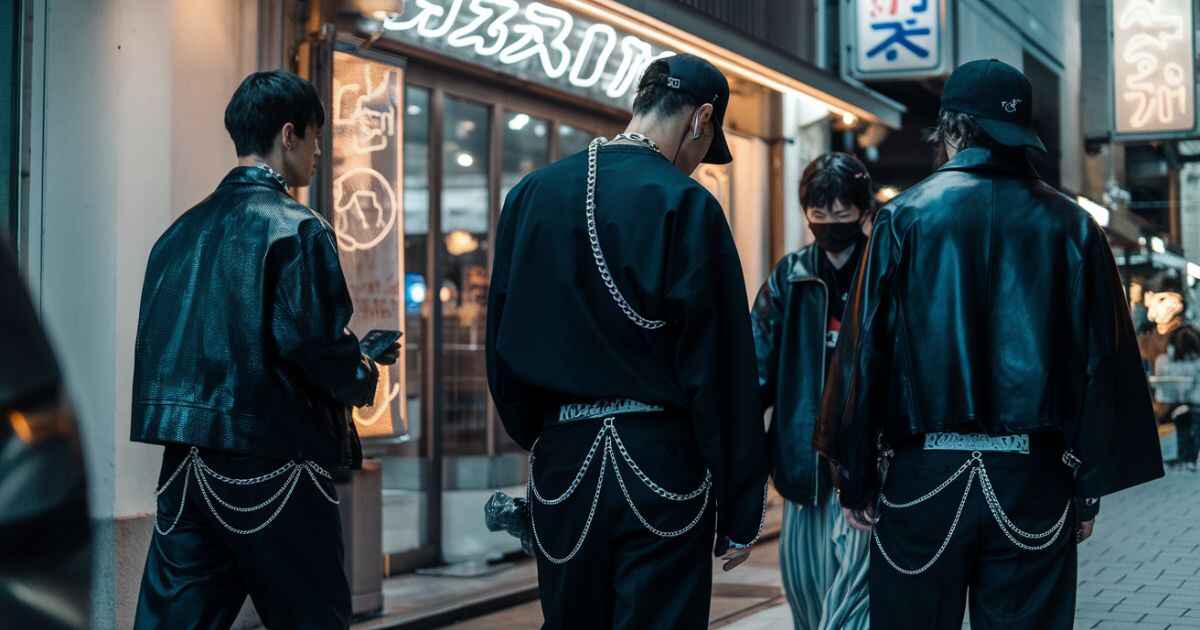Japan is known for its unique blend of tradition and modernity, especially when it comes to fashion. From the intricate designs of traditional kimonos to the eclectic mix of streetwear in Harajuku, Japanese fashion is a fascinating world of contrasts. But when it comes to accessories like chains, you might wonder, Are chains acceptable fashion in Japan? This article will explore that question, diving deep into the cultural context, the influence of subcultures, and how chains fit into the broader fashion landscape in Japan.
Understanding Japanese Fashion Culture
Japanese fashion culture is a vibrant blend of tradition and innovation, deeply rooted in the country’s history while embracing modern trends. Traditional garments like kimono and yukata remain iconic, symbolizing Japan’s rich heritage. These are often worn during festivals and special occasions, showcasing intricate designs and craftsmanship.
On the other hand, Japan is also a global leader in avant-garde fashion, with cities like Tokyo being hubs for cutting-edge styles. Subcultures such as Harajuku, Lolita, and Gyaru highlight the creativity and individuality in Japanese fashion, reflecting the nation’s unique ability to balance tradition with contemporary flair.
The Influence of Tradition in Japanese Fashion
Japanese fashion is deeply rooted in its rich history. Traditional clothing, such as kimonos and yukatas, are not only a significant part of Japan’s cultural heritage but also continue to influence modern fashion trends. The aesthetic principles of wabi-sabi (which appreciates imperfection and transience) and kawaii (the culture of cuteness) play a crucial role in shaping fashion choices in Japan.
- Wabi-Sabi: This philosophy emphasizes simplicity and the beauty of imperfection. You can see its influence in the minimalist designs and muted color palettes often favored in Japanese fashion.
- Kawaii: On the other end of the spectrum, the concept of kawaii has led to a culture that embraces bright colors, playful patterns, and accessories that might seem overly cute or whimsical to an outsider.
In traditional Japanese fashion, chains are not typically used as they don’t align with the more delicate and refined aesthetics of garments like kimonos. However, as Japanese fashion has evolved, especially with the influence of Western styles, chains have found their place in the modern wardrobe.
The Role of Subcultures in Japan
Japan is home to a variety of fashion subcultures, each with its distinct style and preferences. These subcultures often challenge traditional norms and embrace bold fashion choices, including the use of chains.
- Harajuku Fashion: Harajuku is famous for its vibrant street fashion, where self-expression through clothing is key. Chains are a common accessory here, often seen as part of punk, goth, or even kawaii-inspired outfits.
- Visual Kei: This subculture, associated with Japanese rock bands, is known for its dramatic and androgynous looks. Chains are frequently used to add an edgy, rebellious flair to outfits.
- Lolita Fashion: While Lolita fashion is generally more about lace, bows, and Victorian-inspired elegance, some substyles, like Gothic Lolita, may incorporate chains for a darker, more dramatic effect.
These subcultures illustrate that chains are not only acceptable but celebrated within certain fashion circles in Japan. Their use varies widely depending on the aesthetic and message the wearer wants to convey.
Read This Post: Are Fashion Punks Real Punks?
Are Chains Considered Acceptable in Japanese Fashion?

Chains have become increasingly popular in Japanese fashion, particularly in streetwear and alternative styles. They are often used as accessories, adding an edgy, rebellious touch to outfits. In subcultures like Visual Kei and Harajuku, chains can be seen adorning clothing, bags, and even shoes, contributing to a distinctive, bold aesthetic.
However, the acceptability of chains depends on the context. In more formal or traditional settings, such as business environments or ceremonies, chains might be considered inappropriate. Japanese fashion is diverse, and while chains are embraced in certain styles, they may not be universally accepted across all fashion genres.
Chains in Traditional vs. Modern Fashion
When comparing traditional Japanese fashion to modern trends, it’s clear that chains have become more prevalent in contemporary styles. Traditional attire such as kimonos is usually devoid of heavy metal accessories like chains, as these would clash with the garment’s delicate fabric and intricate patterns. Instead, traditional accessories might include obijime (decorative cords) or kanzashi (hair ornaments), which complement the refined aesthetic of the kimono.
In contrast, modern Japanese fashion, particularly in urban areas like Tokyo, has embraced chains as a versatile accessory. The rise of streetwear, influenced by both domestic designers and global trends, has normalized the use of chains in everyday outfits. You might see chains used as:
- Belt Accessories: Hanging chains from belts is a popular trend, adding an edgy element to casual outfits.
- Necklaces and Chokers: Chains are commonly worn as necklaces or chokers, often layered with other accessories to create a bold statement.
- Bag Straps: Chains are sometimes used as straps for bags, adding both function and style.
Fact: A survey by the Japan Fashion Association found that 62% of Japanese youth in urban areas consider chains a trendy accessory, especially in casual and streetwear.
Chains in Japanese Street Fashion
Street fashion in Japan is a melting pot of creativity and self-expression, where chains have become a staple accessory. Harajuku, Shibuya, and other fashion-forward areas of Tokyo are prime examples of where chains are not just accepted but embraced.
- Harajuku Influence: In Harajuku, the use of chains is often part of an overall aesthetic that mixes various styles, from punk to kawaii. For example, a pastel-colored outfit might be contrasted with a chunky silver chain necklace to create a visually striking balance between soft and hard elements.
- Popular Brands: Japanese fashion brands like Comme des Garçons and UNDERCOVER have also incorporated chains into their designs, often blending them with other materials to create unique pieces that challenge conventional fashion norms.
Case Study: In 2019, UNDERCOVER released a collection featuring heavy use of chains as both functional and decorative elements. The collection was well-received, especially among younger audiences, highlighting the growing acceptance of chains in mainstream Japanese fashion.
Social and Cultural Perceptions of Chains in Japan

In Japan, chains are often viewed through a lens shaped by historical and cultural contexts. Traditionally, they were associated with restraint and punishment, symbolizing the physical and social bonds that confined individuals. This perception has evolved, especially in modern times, where chains have also become a symbol of connection and strength, evident in popular fashion and jewelry.
Culturally, chains reflect the Japanese appreciation for symbolism and duality. They can represent both the burden of societal expectations and the strength found in unity. In contemporary culture, chains are often seen as fashionable accessories, blending traditional symbolism with modern aesthetics.
Chains and Japanese Work Culture
Japan’s work culture is known for its formality and emphasis on professionalism, which extends to dress codes. In most corporate environments, chains might be seen as too casual or even inappropriate. Here’s why:
- Conservative Dress Codes: Many Japanese companies have strict dress codes that prioritize simplicity and understated elegance. Accessories like chains, especially if they are large or flashy, might be frowned upon in these settings.
- Unspoken Etiquette: Even in less formal workplaces, there is often an unspoken rule to avoid overly bold fashion choices, as they can be perceived as drawing unnecessary attention.
However, in creative industries such as fashion, media, and design, there’s more flexibility, and chains can be part of a stylish, professional look. In these environments, individuality is often celebrated, making chains an acceptable and even desirable accessory.
Chains and Gender in Japanese Fashion
The perception of chains in Japanese fashion can also vary based on gender. In Japan, fashion often adheres to traditional gender norms, but there is also a significant movement towards gender-neutral fashion.
- Men’s Fashion: Chains are fairly common in men’s fashion, especially in streetwear and casual outfits. They are often used to add a rugged or rebellious touch to an ensemble.
- Women’s Fashion: While chains are less common in traditionally feminine styles, they are gaining popularity, especially in urban and alternative fashion circles. Women might wear chains as part of a layered necklace set or as a subtle accent in a more minimalist outfit.
- Gender-Neutral Fashion: Japan’s younger generations are increasingly embracing gender-neutral fashion, where chains are used freely across all styles. This reflects a broader global trend towards breaking down gender-specific fashion rules.
Quote: “In Tokyo, fashion is about expressing who you are, not fitting into a box. Chains, whether worn by men or women, are just another way to make a statement.” — Yuki Tanaka, Japanese Fashion Blogger
Practical Tips for Wearing Chains in Japan

When wearing chains in Japan, it’s essential to keep cultural norms in mind. Avoid overly flashy or large chains, as Japan values subtlety and modesty in fashion. Opt for simple, elegant designs that complement your outfit without drawing excessive attention. Gold and silver chains are popular, but ensure they match the occasion—formal events call for more understated pieces.
Consider the social setting when choosing your jewelry. In professional environments, minimalism is key; a small chain or pendant is more appropriate. Additionally, remember that Japan’s humid summers can cause discomfort, so lighter chains may be more comfortable during this season.
When and Where to Wear Chains
If you’re planning to visit Japan or incorporate Japanese fashion elements into your wardrobe, here are some tips on when and where chains are most appropriate:
- Casual Outings: Chains are perfect for casual settings like shopping in Shibuya, exploring Harajuku, or hanging out in a cafe. They add a trendy edge to your outfit without being overly flashy.
- Nightlife: In Tokyo’s nightlife districts like Roppongi or Shinjuku, chains are common and can enhance a night-out look, making it more stylish and confident.
- Cultural Events: For more traditional or formal events, like a tea ceremony or a visit to a shrine, it’s best to avoid chains or opt for more subtle, elegant jewelry.
How to Style Chains in a Japanese Context
To blend chains seamlessly into your outfit while staying true to Japanese fashion aesthetics, consider these styling tips:
- Layering: Combine chains with other necklaces or accessories to create a layered effect that’s popular in Japanese street fashion.
- Mixing Materials: Pair metal chains with softer fabrics or materials, such as a silk scarf or a knitted sweater, to balance the look.
- Subtle Accents: For a more conservative approach, opt for a thin chain bracelet or a simple chain belt that adds a touch of style without dominating the outfit.
Table: Chain Styling Tips for Different Settings
| Setting | Recommended Chain Style | Additional Tips |
| Casual Outings | Layered chains with varying lengths | Mix with other metals or pendants |
| Professional | Thin, understated chain necklace or bracelet | Keep it minimal to avoid overpowering |
| Nightlife | Bold, chunky chains as statement pieces | Pair with dark, sleek outfits |
| Traditional Events | Avoid or choose very subtle, elegant chains | Complement traditional clothing styles |
Conclusion
Chains have evolved from being a purely functional item to a versatile fashion accessory in Japan. While traditional Japanese fashion may not typically incorporate chains, modern styles, particularly within street fashion and subcultures, have embraced them. The acceptability of chains in Japan varies by context, with chains being widely accepted in casual and urban settings, but less so in formal or professional environments.

